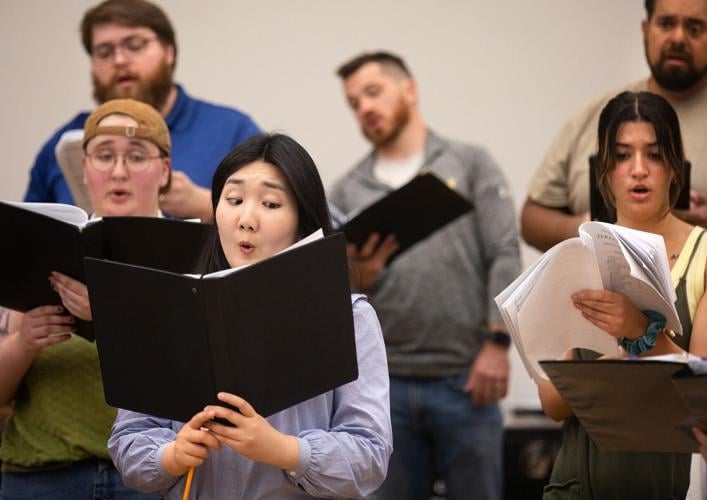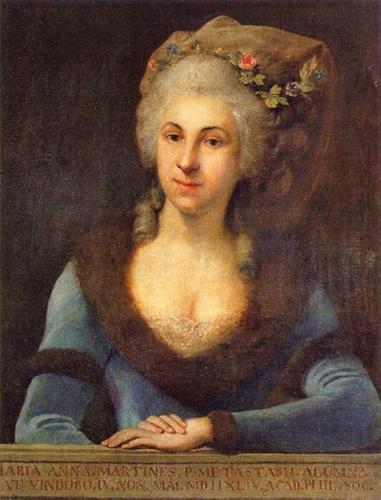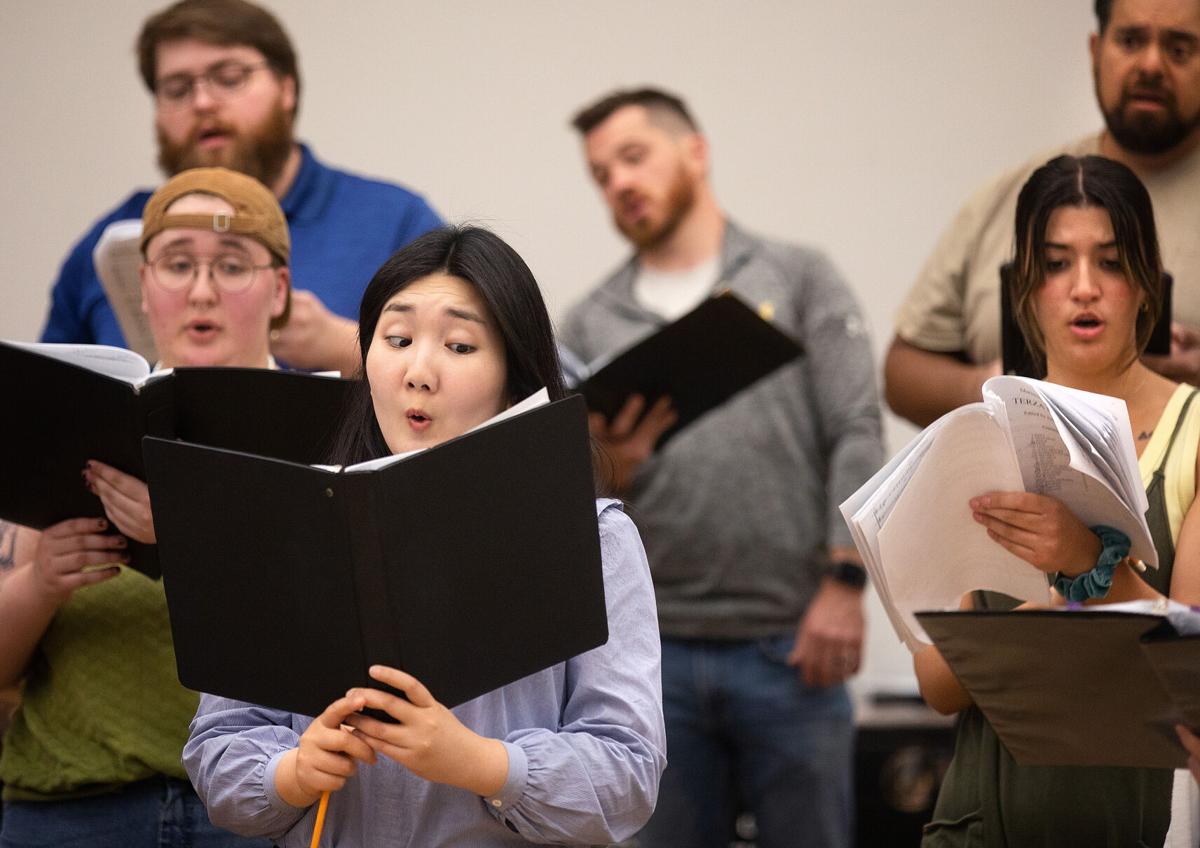Marianna Martines was all of 17 when St. Michael’s Church in Vienna performed her “Terza Messa” as part of its Feast of St. Michaels celebration in 1761.
The Viennese newspapers published an announcement of the concert; it was a big deal.
“It’s a significant piece because it’s the first piece by her where there was an actual record,” said University of Arizona doctoral student James Higgs.
But by the next day, the “Terza Messa” wasn’t such a big deal and life went on in Vienna. Martines’s mass faded into the public memory and was locked away in the church’s archives to be largely forgotten.
Until UA Choral Director Elizabeth Schauer assigned Higgs in fall 2020 to research Martines.
His work took him four years and a trip to Vienna and will culminate Sunday, April 28, in the first American performance of Martines’s mass — and the first time it has been performed in whole since that 1761 performance in Vienna, Schauer said.

University of Arizona doctoral student James Higgs’ research has led to a performance of Marianna Martines’s “Terza Messa.”
The performance will involve a 31-voice UA Symphonic Choir, five soloists — soprano Erika Burkhart, mezzo-sopranos Kristin Dauphinais and Macy Halverson, tenor Dane Alexander Carten and bass Jared Peterson — and an orchestra of 17 Tucson Symphony Orchestra players.
Schauer’s assignment to Higgs was part of her recent graduate choral curriculum overhaul to include historical works by female composers and composers of color. The idea is to give these overlooked voices a place alongside the Western and contemporary composers that are baked into the curriculum.
Higgs, who will graduate in May, turned his research into his dissertation, but it was much more than that.
It became something of an intellectual obsession, the kind where every layer he peeled back led to another fascinating layer.
“When I found the name and started researching her, I was shocked I had never heard about her,” he recalled.

The UA Symphonic Choir will perform Viennese composer Marianna Martines’s “Terza Messa” for the first time since it was performed in 1761.
In her lifetime, Martines was famous for her piano and vocal performances, including singing for Empress Maria Theresa. Her compositions included a number of secular cantatas and two oratorios that used texts from her mentor and lifelong family friend, the consequential Italian poet and librettist Pietro Metastasio. Mozart and Haydn, who lived in the apartment building where she grew up and taught her keyboard lessons, were frequent guests at her parlor recitals.
“I learned a lot about her background and how influential she was,” Higgs said of his research, “but when it came to finding recordings or finding scores of her work, there wasn’t much available.”
His research led Higgs, who moved to Tucson in 2019 from California and enrolled in the UA doctoral program in 2020, to the archives of St. Michael’s Church in Vienna, where Martines’s handwritten manuscript was kept. Because it was in the height of the pandemic, the archives, using a high-tech photo scanner, scanned all 160 pages and emailed them to Higgs for $500 Euros, paid with a university research grant.
“It’s her original score when she was composing the piece. It has all these different details in it, her erasure marks, her crossing things out and adding things,” Higgs said.
But there also was a lot missing in those pages.
That led Higgs to make the trip to Vienna and the church’s archives, where he found the handwritten parts for each instrument copied on parchment paper.
Higgs scanned the documents with his phone and brought them back to Tucson to become part of the first-ever published edition of Martines’s “Terza Messa.”
When the UA Symphonic Choir performs the work on Sunday, the audience will likely hear influences from Haydn and Mozart’s Baroque era and flashes of classical, which was just starting to emerge when Martines composed the work.

Katie Thaler plays the cello as the choir sings during a rehearsal at the School of Music.
“There’s minuets, some dance styles. It might sound a little bit like a Bach cantata with brass and timpani and strings and oboes,” Higgs said. “You can hear influences of Italian opera. The closest comparison could be, which people might be familiar with, is Vivaldi.”
Schauer said Sunday’s concert, which begins at 3 p.m. at Grace St. Paul’s Episcopal Church, 2331 E. Adams St., will be recorded, and the recording and score will be available for purchase in May. Admission to the concert is free, but a freewill offering will be collected to defray costs.
The University of Arizona Then and Now. Black and white photos from the Arizona Daily Star and Tucson Citizen archives paired with a color photo of the way the scene looks today. Produced by Rick Wiley / Arizona Daily Star








